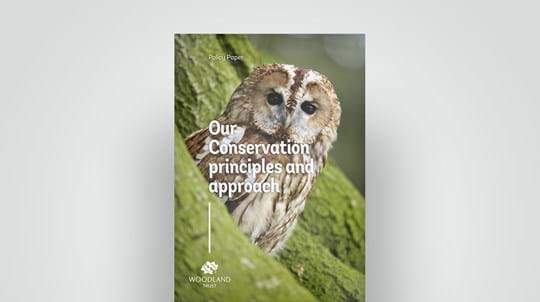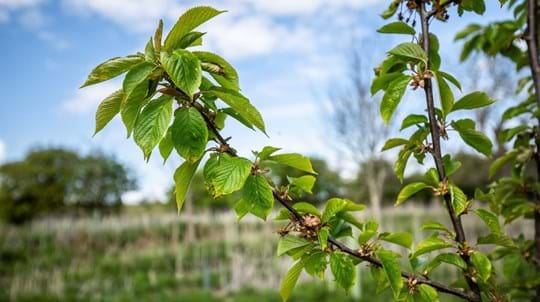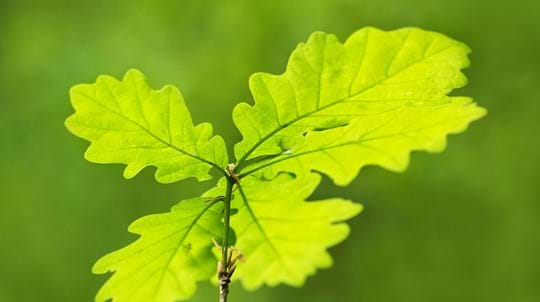Woodland creation is central to our vision of a UK rich in native woods and trees, for people and wildlife. As a nation, we must deliver on ambitious targets to increase the extent of native woods and trees if we are to tackle the climate and nature crises.
To drive nature recovery and deliver outcomes for people, we must demonstrate excellence in planning and delivery for woodland creation.
Our guide builds on the latest scientific evidence, 25-years of collective experience across the Trust and a community of expert stakeholders. It details the approach we follow on our own estate, and where we manage woodland creation on others’ behalf. We hope it will provide a consistent approach for delivering woodland creation projects at any scale.
We need more native woods and trees
increase in UK woodland
in the last 20 years - that's about 290,000 hectares
million hectares
of new woods recommended by the Climate Change Committee for the UK to be carbon neutral by 2050
decline
in UK woodland wildlife species since 1970
What do we mean by woodland creation?
The guide applies to the establishment of native woods and trees in all contexts and by a number of possible methods. That includes the largest sites to single trees, through planting, seeding or natural colonisation, in urban or rural settings.
At all scales and settings, the guide strongly encourages a number of key principles. It sets out a phased, long-term approach with nature recovery at its heart. To support this, we emphasise the use of native, locally sourced seed and trees, and uphold - and in many cases go beyond - the UK Forestry Standard's (UKFS) core elements of sustainable forest management.
Who is it for?
We hope our approach will inspire and provide a framework for a broad range of professionals to build on their own knowledge and experience. Conservation organisations, ecological consultants, tree officers, land managers, contractors and many more will find it useful.
How to use the guide
The guide outlines a chronological process but is also a drop-in reference document and a signpost to other useful resources. It's not intended to be prescriptive or a detailed manual - we encourage creativity and imagination, using the guide as a consistent approach for delivery at any scale.
Used as a framework, the guide ensures you ask the right questions, but doesn't give extensive technical answers. It assumes involvement of a skilled and knowledgeable adviser in every project.
A consistent framework
To establish naturally functioning, wildlife-rich woods and trees takes years. Split into five key phases, this guide encourages thinking through this long-term process in a consistent way.

1. Vision
Clearly articulate the right reason for woodland creation through a vision and objectives, informed by thorough and inclusive stakeholder engagement.

2. Assess
Understand the landscape context, site characteristics, features and constraints.

3. Design
Synthesise the information collated during site assessment and balance priorities sensitively using a set of design principles.

4. Initiate
Choose the right species and provenance for your site, as well as the most appropriate method for creation, whether that be planting, direct seeding or natural colonisation.

5. Establish
Take a long-term view, looking for ways to establish and maintain a naturally functioning woodland ecosystem and monitoring to assess progress.
Supporting guidance
Use the woodland creation guide alongside our other key technical guides.
-
Practical guidance
Site Assessment Handbook
This handbook will help you gather information on your site to help you create your own woodland. It guides you through four assessment stages and offers advice on growing the right trees in the right place.
PDF (4.65 MB)
-
Practical guidance
Tree species handbook
Our guide to choosing the best tree species when creating new woodland, with profiles of 50 tree and shrub species and 18 woodland communities.
PDF (13.70 MB)
Our Brynau Farm site near Neath is within easy reach of 18% of Wales' population, offering opportunities to connect with nature and boost their physical and mental health.
A brighter future
Depending on your vision, site, and stakeholder interests, there are multiple benefits or themes to choose from when setting objectives:
- Nature recovery through habitat creation and adaptation
- Climate change mitigation
- Improving people's health and wellbeing and providing access, employment, community involvement and learning.
- Wood and food production – forestry and agricultural productivity
- Water quality and flood management
- Air quality
- Soil formation and nutrient cycling.
Effective woodland creation will drive nature recovery and make a real difference to people’s lives.
canopy cover
our recommendation for new developments
hedgerow network increase
recommended by the Sixth Carbon Budget to help store carbon
increase in farm productivity
could be achieved with a well-designed agroforestry scheme
Homegrown foundations
With nature recovery a priority objective, the guide advocates for native tree species for maximum benefits to wildlife. The focus is exclusively on trees sourced and grown in the UK and Ireland (UKISG) too. This is a critical measure if we are to further develop genetic variation, improve resilience, and maintain biosecurity by preventing introduction of pests and diseases via imported tree stock.
oak trees imported into the UK 2013-15
invested in our UKISG scheme since 2014
Explore more

Policy paper
Our conservation principles and approach
PDF (2.67 MB)

Plant trees
Trees for landowners and farmers
If you’re looking to plant trees, we have the trees, grants and funding schemes to help.

About us
Where do our trees come from?
With increasing numbers of tree pests and diseases in the UK, it's important we have confidence in the trees we plant. Find out more about how our trees are sourced and grown.


